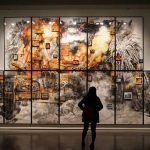- This topic is empty.
-
AuthorPosts
-
2025-07-14 at 2:14 pm #13131
In the world of photography, lighting is often regarded as the most critical element that can make or break an image. Bad lighting can lead to unflattering shadows, washed-out colors, and an overall lack of depth, rendering even the most well-composed shots ineffective. Fortunately, there are several techniques and tools available to help photographers of all levels eliminate bad lighting and enhance their images. In this post, we will explore advanced strategies for improving lighting conditions in your photos, both in-camera and during post-processing.
Understanding the Impact of Lighting
Before diving into solutions, it’s essential to understand how lighting affects your photographs. The quality, direction, and color of light can dramatically alter the mood and clarity of an image. Bad lighting can result from harsh midday sun, dim indoor environments, or artificial light sources that cast unflattering hues. Recognizing these factors is the first step toward rectifying lighting issues.
1. In-Camera Techniques
a. Utilizing Natural Light
One of the simplest ways to combat bad lighting is to harness natural light effectively. Shooting during the golden hour—the hour after sunrise and before sunset—provides soft, diffused light that enhances the subject’s features. If you’re shooting indoors, position your subject near windows to take advantage of natural light. If the light is too harsh, consider using sheer curtains to diffuse it.
b. Reflectors and Diffusers
Reflectors can redirect light onto your subject, filling in shadows and creating a more balanced exposure. You can use professional reflectors or DIY options like white foam boards or even a car windshield shade. Similarly, diffusers can soften harsh light, making it more flattering. A simple piece of white fabric or a commercial diffuser can work wonders in reducing glare and creating a more even light distribution.
c. Adjusting Camera Settings
Understanding your camera settings is crucial in managing bad lighting. Increasing the ISO can help in low-light situations, but be cautious of introducing noise. A wider aperture (lower f-stop number) allows more light to enter the lens, which can be beneficial in dim conditions. Additionally, adjusting the shutter speed can help control exposure, but be mindful of motion blur if the speed is too slow.
2. Post-Processing Techniques
a. Editing Software
Post-processing is an invaluable tool for correcting lighting issues. Software like Adobe Lightroom and Photoshop offers a range of features to enhance your images. Use the exposure slider to brighten underexposed images, and the contrast slider to add depth. The highlights and shadows sliders can help recover details lost in overly bright or dark areas.
b. Color Correction
Bad lighting can often lead to color casts, which can be corrected in post-processing. Use the white balance tool to adjust the temperature and tint of your image, ensuring that colors appear natural. The HSL (Hue, Saturation, Luminance) panel allows for fine-tuning specific colors, helping to restore vibrancy and accuracy.
c. Dodging and Burning
Dodging and burning are classic techniques used to lighten or darken specific areas of an image. This method can help emphasize certain features or correct uneven lighting. Use a soft brush with low opacity to gradually build up the effect, ensuring a natural look.
3. Investing in Lighting Equipment
For those serious about photography, investing in quality lighting equipment can be a game-changer. Here are a few options to consider:
a. External Flash Units
An external flash can provide additional light when natural sources are insufficient. Look for units that offer adjustable power settings and the ability to bounce light off walls or ceilings for softer illumination.
b. Continuous Lighting Kits
Continuous lighting kits, which include LED or fluorescent lights, allow for consistent lighting conditions. These are particularly useful for studio photography and can be adjusted to create the desired ambiance.
c. Light Modifiers
Softboxes, umbrellas, and ring lights can help diffuse and soften light, making it more flattering for portraits and product photography. These modifiers can significantly improve the quality of light, reducing harsh shadows and creating a more professional look.
Conclusion
Eliminating bad lighting in photography is not merely about having the right equipment; it involves a combination of understanding light, mastering camera settings, and utilizing post-processing techniques. By implementing these strategies, photographers can transform their images from mediocre to stunning, regardless of the initial lighting conditions. Remember, the key to great photography lies in the ability to adapt and creatively manipulate light to your advantage. Happy shooting!
-
AuthorPosts
- You must be logged in to reply to this topic.






